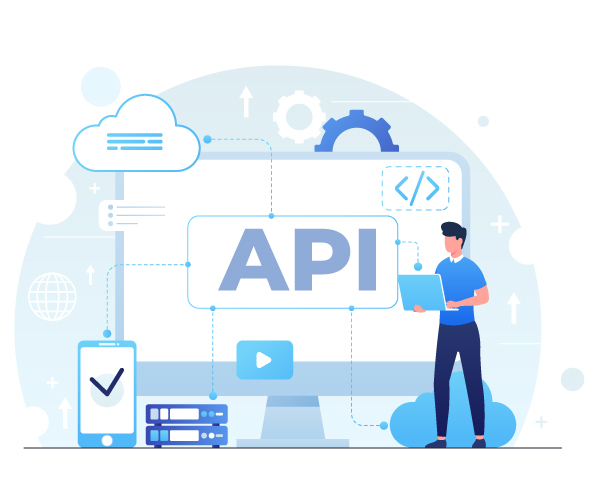iPaaS (Integration Platform as a Service) is fast replacing ESB (Enterprise Service Bus) across industries, shaping a full-fledged disruption. The older systems slow down the time to market as well as make it hard to synchronize a huge number of process-specific software. iPaaS, on the other hand, provides a faster cloud-based alternative to connect ground-to-ground, cloud-to-cloud, and ground-to-cloud applications.
Integration is fast becoming a necessary step for innovation as opposed to being a trend, and thus, there’s no way your business can afford to miss iPaaS. Now that you know what iPaaS stands for, let us go through the top five reasons why most enterprises are shifting to iPaaS.
Experts at i95Dev have curated this listicle to help you decide to transition your enterprise tech stack to iPaaS and ensure that your business is future-ready. Let’s begin:
1. iPaaS is integration-friendly and also supports real-time Big Data processing
Many cutting-edge iPaaS solution providers offer automatic API generation, making it easier for you to integrate your software packages with third-party applications/services. Microservices infrastructure also benefits from iPaaS as it allows leverage in pre-built connectors on the go. Horizontal scalability is another hallmark benefit of iPaaS, making it ideal for IoT networking applications.
These aspects enable businesses to integrate on-premises and cloud applications within short durations and showroom features such as Role-Based Access Control (RBAC). Also, it allows corporations to comply with regulatory standards such as CCPA, HIPAA, GDPR, and SOC2, making it extremely potent for fast-paced deployment. Business transformation rules also come built-in, which lets businesses connect their cloud with Big Data to generate business intelligence inputs in real-time.
2. iPaaS supports low-code development
A benefit that contributes to fast integrations, deployment, and ease of use is the support for low code development and even no-code development in iPaaS. Generally, developing an API takes around 20-30 days, but with iPaaS, you can leverage low-code API creation tools to complete the same task within a much shorter period.
It also enables developers to map the development process visually along with no-code tools, adding to its intuitiveness. The user also benefits from the unified view of all integration processes, as the user interface makes it easier for even non-technical people to build and manage integrations. On the other hand, the same use cases become extremely time-consuming and cost-intensive as if they would require a developer to write and test extensive codes.
3. Better productivity and scalability: iPaaS is best-suited for Agile
Businesses transform and repivot much more frequently in today’s world than in the past, and it translates to the need for greater productivity and scalability in IT infrastructure. iPaaS enables businesses to democratize development through its API fluency, which allows the creation of connected ecosystems.
This, in turn, allows organizations to create new revenue channels, simplify updates, and build secure gateways. Considering these features with the cost-effectiveness it provides, making changes to the IT infrastructure becomes simple and sustainable, and it ultimately helps businesses become truly agile. In a nutshell, iPaaS makes it possible for even smaller businesses to benefit from enterprise-grade capabilities that are truly scalable without significant risks.
4. Cost efficiency
The time and labor required for integration were the most crucial factors behind the high costs with ESBs. However, low-code and no-code integration capabilities nullify these aspects to a huge extent, while script-based editors facilitate complicated use cases. Also, the iPaaS subscription charges provide a far more affordable alternative to the on-site hardware costs and maintenance overheads.
Combining the cost-effectiveness of API development and managing integrations, we can agree that the cost efficiency of iPaaS-based IT infrastructure is much higher, with the added advantages of state-of-the-art cybersecurity being a cherry on the top.
5. More suitable for multi-tenant solutions
Legacy middleware and ESBs enacted a considerable number of restrictions regarding multi-tenant solutions. However, the iPaaS model bypasses those limitations as it modifies engagement rules for the benefit of users. For instance, there is no limit on the number of users that can be accommodated, and licensing is also shared by the entire platform.
These changes allow companies to make better use of their cloud software solutions. On the other hand, reduced integration redundancies and massive scalability also ensure that new tenants, i.e., customers, are quickly onboarded. iPaaS also helps businesses accelerate digitization as it allows unifying data from various applications, creating new logic, and providing a cost-effective ecosystem to thrive with these initiatives.
Wrap Up
Throughout these five benefits, you might have noticed an element of commonality- iPaaS solutions have inherent structural adaptations that facilitate modern IT requirements. Thus, it is in your best interest to leverage iPaaS solutions to make your business more agile while saving time and money on your IT processes. If you need expert advice on transitioning to iPaaS, get in touch with i95Dev now.
Recent Blogs
Why Shopify and NetSuite Integration is Crucial for Your eCommerce Success
Why Shopify and NetSuite Integration is Crucial for Your eCommerce Success Author Category Share The digital transformation of commerce is accelerating. According to Gartner, by 2025, a...
Streamlining eCommerce Business with Adobe Commerce (Magento) and NetSuite Integration
Streamlining eCommerce Business with Adobe Commerce (Magento) and NetSuite Integration Author Category Share In the ever-evolving world of commerce, managing eCommerce operations can feel...
B2B e-commerce – How Home Depot is leading the game
B2B eCommerce – How Home Depot is leading the game Author Category Share The home improvement industry has undergone a remarkable transformation, and at the heart of this change is the rise...








